Mathematician and daughter of Lord Byron left legacy as role model for young women entering technology careers.
Google's latest doodle celebrates the 197th birthday of Ada Lovelace, the 19th century mathematician and daughter of romantic poet Lord Byron.
Often described as world's first computer programmer, Lovelace showed a keen interst in mathematical studies from an early age and was taught by her mother, Annabella, who was also a gifted mathematician.
In correspondence with Charles Babbage, who was working on the ideas for a machine that is now recognised as a forerunner of the modern computer, Ada demonstrated her gift for mathematics and was described by him as 'the enchantress of numbers'.
She was introduced to him by another female scientist famous in her day, the mathematician Mary Somerville, who mentored Ada during her relatively short life.
Babbage was impressed by the mathematical skills Ada possessed and invited her to translate a piece in Italian written by Luigi Menabrea describing Babbage's 'analytical engine', so that it could be published in England.
Her notes include what is recognised as the first algorithm intended to be processed by a machine, while she also speculated on its future ability to create graphics and complex music.
Born in 1815, she had no relationship with her father, who died when she was eight. In 18.
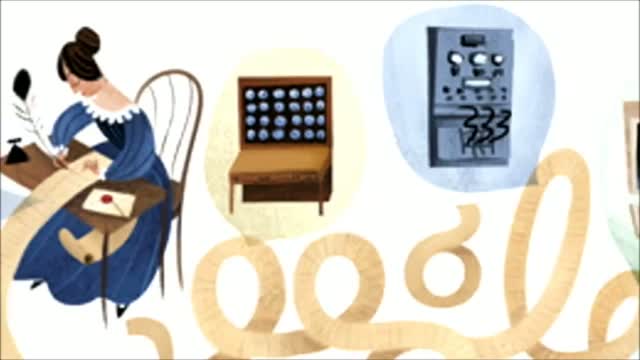
Mathematician and daughter of Lord Byron left legacy as role model for young women entering technology careers.
Google's latest doodle celebrates the 197th birthday of Ada Lovelace, the 19th century mathematician and daughter of romantic poet Lord Byron.
Often described as world's first computer programmer, Lovelace showed a keen interst in mathematical studies from an early age and was taught by her mother, Annabella, who was also a gifted mathematician.
In correspondence with Charles Babbage, who was working on the ideas for a machine that is now recognised as a forerunner of the modern computer, Ada demonstrated her gift for mathematics and was described by him as 'the enchantress of numbers'.
She was introduced to him by another female scientist famous in her day, the mathematician Mary Somerville, who mentored Ada during her relatively short life.
Babbage was impressed by the mathematical skills Ada possessed and invited her to translate a piece in Italian written by Luigi Menabrea describing Babbage's 'analytical engine', so that it could be published in England.
Her notes include what is recognised as the first algorithm intended to be processed by a machine, while she also speculated on its future ability to create graphics and complex music.
Born in 1815, she had no relationship with her father, who died when she was eight. In 18
Technology video | 958 views
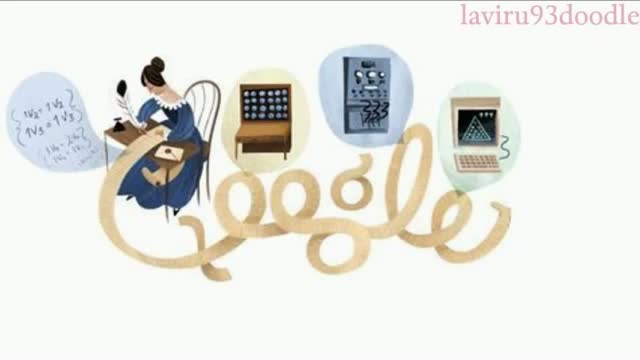
You are in for a visual treat as soon as you visit the homepage of Google.Log into Google and you will be greeted with a doodle featuring a stylized Google logo of a progression from old age computers to present day laptops.
Today Google has doodled the evolution of computers on the occasion of the world's first computer programmer’s birth anniversary.
This doodle by Google celebrates Ada Lovelace’s 197th birth anniversary, the 19th century mathematician and daughter of romantic poet Lord Byron. The doodle shows Ada Lovelace writing the pioneering computer program with a quill pen seated on a desk and the paper scroll she is writing her algorithm on twirls in the shape of the letters of the Google logo.
Ada Lovelace, who was christened Augusta Ada Byron, was an English mathematician and writer chiefly known for her work on Charles Babbage's early mechanical general-purpose computer, the Analytical Engine. Her notes on the engine include what is recognised as the first algorithm intended to be processed by a machine. Because of this, she is sometimes considered the world's first computer programmer.
She left a legacy as role model for girls and young women considering careers in technology.This day is also dedicated to the celebration of the achievements of women in science and technology.
Technology video | 1103 views
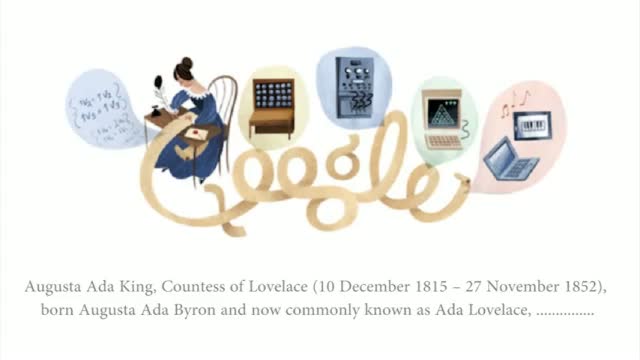
Ada Lovelace, born Augusta Ada Byron, was an English mathematician and writer widely known for her work on Charles Babbage's early mechanical general-purpose computer, the Analytical Engine. She worked on what is believed to be the first algorithm intended to be processed by a machine, making her the world's first known computer programmer.
Charles Babbage was an English mathematician, considered to be the father of the computer. He first proposed the use of a mechanical computer in 1822 for computing in the fields of astronomy and mathematics. He received funding from British government to build such a machine in 1823, and spent the next several years trying to build the Difference Engine.
By the time the government killed the project in 1842, they had given Babbage over ₤17,000, without receiving a working engine. By then, Babbage had moved on to building his more general purpose Analytical Engine, something he first described in 1837.
The Analytical Engine consisted of an arithmetic logic unit, control flow in the form of conditional branching and loops, and integrated memory, a design that continues to form the backbone of modern-day computers.
Ada Lovelace met and corresponded with Charles Babbage on many occasions, including socially and in relation to Babbage's Difference Engine and Analytical Engine. Ada became fascinated with his Difference Engine and translated Italian mathematician
Technology video | 799 views
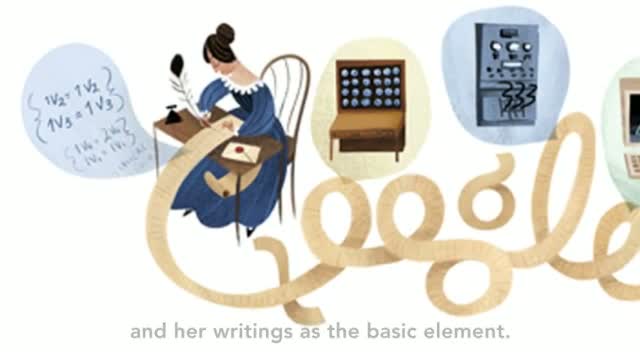
Search giant Google on Monday paid tribute to a woman who many consider as the mother of computer programming: Augusta Ada King, a.k.a. Ada Lovelace, with - what else - one of its patented doodles.
Hovering the pointer or mouse over the logo would produce a bubble indicating December 10 would have been Ada Lovelace's 197th birth anniversary.
'In the Google Doodle there is a mathematical formula written in a bubble just above the “G” in Google. There is also a drawing of a woman in the image, which looks a lot like Ada Lovelace. In the doodle there are also symbols of what was considered the first computers to modern day computers like a laptop and iPad or Tab,' said an article on 3d-car-shows.com.
With all the images and the words “Google” written in what looks like a lace type font, I personally think that Google have done a great job today, telling the world about Ada Lovelace and the legacy she left behind!
As in the past, clicking on the doodle would take the visitor to a Google Search Results page for Ada Lovelace.
Ada Lovelace, was mainly known for her work on Charles Babbage's early mechanical computer, the analytical engine.
Her notes on the engine include what is considered the first algorithm for a machine, leading many to consider her the world's first computer programmer.
She also also foresaw the capability of computers to go beyond mere
Technology video | 1075 views
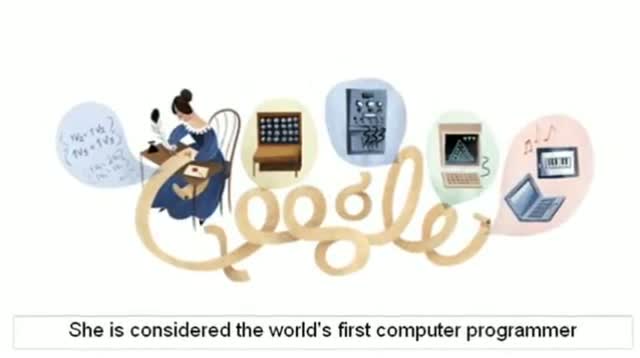
From the first program that Ada Lovelace created for the Analytical Engine to present day laptops and tablet PCs, Google has doodled the evolution of computers on the occasion of the world's first computer programmer's 197th birth anniversary.
The doodle shows Ada Lovelace writing the pioneering computer program with a quill pen seated on a desk and the paper scroll she is writing her algorithm on twirls in the shape of the letters of the Google logo.
Ada King, the countess of Lovelace, was born on December 10, 1815 in Piccadilly Terrace, Middlesex, England and was the daughter of the famous poet Lord Byron, but as her parents separated soon after her birth and she did not get to know her father well.
Her original name was Augusta Ada Byron and on her marriage to William King she became Ada King and later her husband became an earl, she became the countess of Lovelace.
While she was educated at home by tutors, her mathematical skills were further honed by Augustus De Morgan, the first professor of mathematics at the University of London, who helped her in advanced studies.
Her association with Charles Babbage, father of the computer, began when she translated an article by Italian mathematician and engineer Luigi Federico on Babbage's proposed Analytical Engine. She not only translated the work but added her notes that were more elaborate and longer than the work she was translating.
Ada Lovelace died at the young age o
Technology video | 832 views
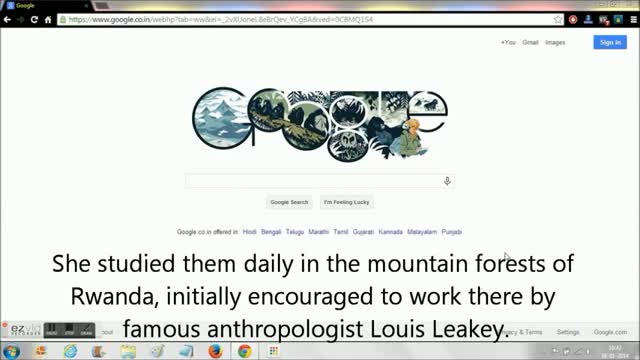
Watch Google Doodle Celebrates Dian Fossey 82nd Birthday - Google Doodle - Dian Fossey Video.
Technology video | 1930 views
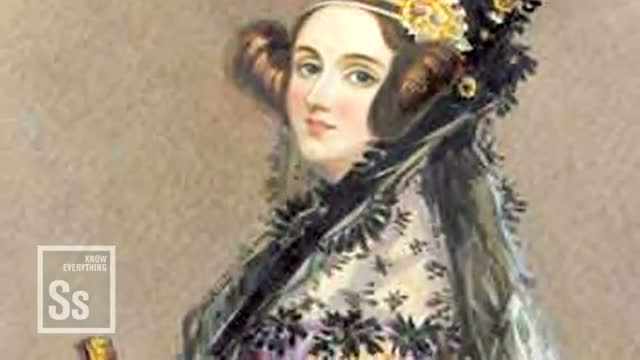
Ada Lovelace: the enchantress of numbers
Technology video | 1018 views
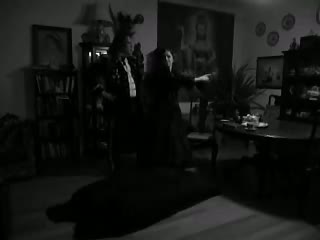
A research assistant working for the Difference Engine Foundation found an early form of film in a secret vault in a home that belonged to Charles Babbage, the historical inventor of the Difference Engine. It appears to show the last moments of the Countess Ada Lovelace (his assistant and inventor of computer programming) right before her death. She supposedly died of medical issues at home, but this film suggests otherwise!
Technology video | 817 views
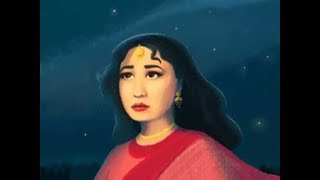
On the late legendary actress Meena Kumari's 85th birth anniversary, Google has devoted a special doodle in her memory. The doodle shows the actress' beautiful face and expressive eyes.
Read more at:
//economictimes.indiatimes.com/articleshow/65221247.cms?
Subscribe to The Economic Times for latest video updates. It's free! - http://www.youtube.com/TheEconomicTimes?sub_confirmation=1
More Videos @ ETTV - http://economictimes.indiatimes.com/TV
http://EconomicTimes.com
For business news on the go, download ET app:
Google Play - https://market.android.com/details?id=com.et.reader.activities
iTunes - http://itunes.apple.com/us/app/the-economic-times/id474766725?ls=1&mt=8
Windows Store - http://www.windowsphone.com/en-US/apps/d73c2150-6acf-445b-b810-19a004b5d3e8
ET elsewhere:
https://www.facebook.com/EconomicTimes
http://twitter.com/economictimes
https://plus.google.com/+TheEconomicTimes/
https://www.instagram.com/the_economic_times/
https://www.linkedin.com/company/the-economic-timesutm_source=contentofinterest&utm_medium=text&utm_campaign=cppst
Watch Meena Kumari honoured with a special Google doodle on her 85th birth anniversary With HD Quality
Technology video | 1239 views
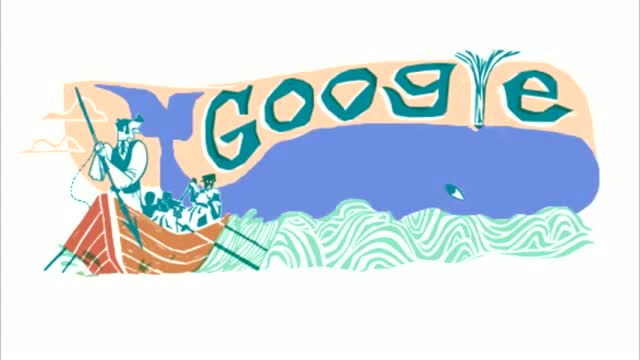
Continuing with its trend, Google on Thursday honoured American novelist Herman Melville with a doodle, commemorating the 161st anniversary of the publication of his landmark novel Moby Dick.
The doodle, which portrays a scene from the novel Moby Dick, also shows Captain Ahab commandeering a whaling boat with a harpoon in his hands as if he is getting ready to strike at the enigmatic white sperm whale.
Moby Dick, also published as The Whale, was first published by Richard Bentley in London on October 18, 1851, in an expurgated three-volume edition, and weeks later as a single volume, by New York City publisher Harper and Brothers as Moby Dick; or, The Whale on November 14, 1851.
Herman Melville’s Moby Dick was hailed as one of the literary masterpieces of both American and world literature.
Technology video | 818 views
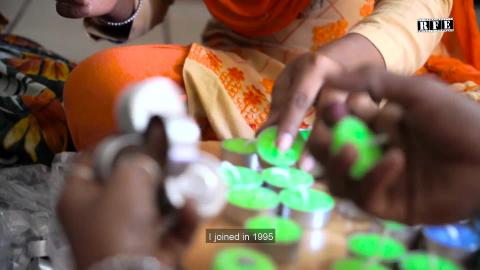
SAMARPAN is an ode to the dedicated team of ASHI, Haryana and Ashiana Children's Home, as they mark their Golden Jubilee this year in 2019. Available in Hindi and English Subtitles.
Watch the full film 'SAMARPAN' online on
- Rolling Frames Entertainment - (https://rfetv.in)
- VEBLR - (https://veblr.com/)
- ASHI, Haryana's website - https://ashi-haryana.org/
About ASHI, Haryana:
Association for Social Health in India (ASHI) is a Voluntary and Social Organization aiming at challenging those conditions that lead to exploitation of women and children for anti-social purposes by providing shelter for Destitute & Orphan children and arranging for their education, vocational training and rehabilitation are one of the Association’s main activities. The Governor of Haryana, their Chief Patron, visits the Home once a year to encourage and bless the children.
All Rights Reserved - Pinaka Mediaworks LLP - 2019
Produced by: Association of Social Health in India (Haryana State Branch), Pinaka Mediaworks & Rolling Frames Entertainment.
Director: Ojaswwee Sharma
Production House - Pinaka Mediaworks LLP
- Associate Director: Rohit Kumar
- Editor: Bhasker Pandey
- Cinematography Team:
Raman Kumar
Harjas Singh Marwah
Surinder Singh
- Subtitles: Diveeja Sharma
For Pinaka Mediaworks LLP (India)
- Co-founder & CFO: Sunil Sharma
- Brand Communication Head: Diveeja Sharma
- Head of Post Production: Bhasker Pandey
- Legal Advisor: Vishal Taneja
Kids video | 572528 views
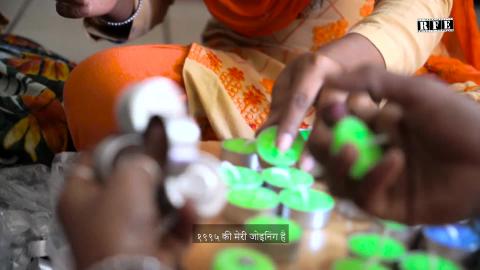
SAMARPAN is an ode to the dedicated team of ASHI, Haryana and Ashiana Children's Home, as they mark their Golden Jubilee this year in 2019. Available in Hindi and English Subtitles.
Watch the full film 'SAMARPAN' online on
- Rolling Frames Entertainment - (https://rfetv.in)
- VEBLR - (https://veblr.com/)
- ASHI, Haryana's website - https://ashi-haryana.org/
About ASHI, Haryana:
Association for Social Health in India (ASHI) is a Voluntary and Social Organization aiming at challenging those conditions that lead to exploitation of women and children for anti-social purposes by providing shelter for Destitute & Orphan children and arranging for their education, vocational training and rehabilitation are one of the Association’s main activities. The Governor of Haryana, their Chief Patron, visits the Home once a year to encourage and bless the children.
All Rights Reserved - Pinaka Mediaworks LLP - 2019
Produced by: Association of Social Health in India (Haryana State Branch), Pinaka Mediaworks & Rolling Frames Entertainment.
Director: Ojaswwee Sharma
Production House - Pinaka Mediaworks LLP
- Associate Director: Rohit Kumar
- Editor: Bhasker Pandey
- Cinematography Team:
Raman Kumar
Harjas Singh Marwah
Surinder Singh
- Subtitles: Diveeja Sharma
For Pinaka Mediaworks LLP (India)
- Co-founder & CFO: Sunil Sharma
- Brand Communication Head: Diveeja Sharma
- Head of Post Production: Bhasker Pandey
- Legal Advisor: Vishal Taneja
Kids video | 108250 views
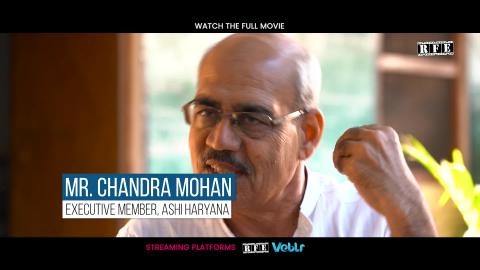
SAMARPAN is an ode to the dedicated team of ASHI, Haryana and Ashiana Children's Home, as they mark their Golden Jubilee this year in 2019. Available in Hindi and English Subtitles.
Watch the full film 'SAMARPAN' online on
- Rolling Frames Entertainment - (https://rfetv.in)
- VEBLR - (https://veblr.com/)
- ASHI, Haryana's website - https://ashi-haryana.org/
About ASHI, Haryana:
Association for Social Health in India (ASHI) is a Voluntary and Social Organization aiming at challenging those conditions that lead to exploitation of women and children for anti-social purposes by providing shelter for Destitute & Orphan children and arranging for their education, vocational training and rehabilitation are one of the Association’s main activities. The Governor of Haryana, their Chief Patron, visits the Home once a year to encourage and bless the children.
All Rights Reserved - Pinaka Mediaworks LLP - 2019
Produced by: Association of Social Health in India (Haryana State Branch), Pinaka Mediaworks & Rolling Frames Entertainment.
Director: Ojaswwee Sharma
Production House - Pinaka Mediaworks LLP
- Associate Director: Rohit Kumar
- Editor: Bhasker Pandey
- Cinematography Team:
Raman Kumar
Harjas Singh Marwah
Surinder Singh
- Subtitles: Diveeja Sharma
For Pinaka Mediaworks LLP (India)
- Co-founder & CFO: Sunil Sharma
- Brand Communication Head: Diveeja Sharma
- Head of Post Production: Bhasker Pandey
- Legal Advisor: Vishal Taneja
Kids video | 108526 views
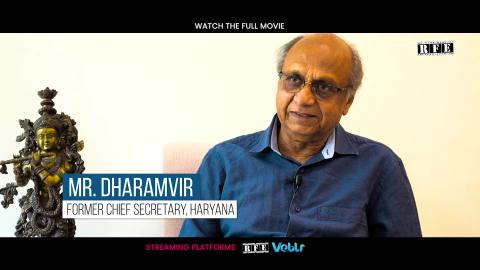
SAMARPAN is an ode to the dedicated team of ASHI, Haryana and Ashiana Children's Home, as they mark their Golden Jubilee this year in 2019. Available in Hindi and English Subtitles.
Watch the full film 'SAMARPAN' online on
- Rolling Frames Entertainment - (https://rfetv.in)
- VEBLR - (https://veblr.com/)
- ASHI, Haryana's website - https://ashi-haryana.org/
About ASHI, Haryana:
Association for Social Health in India (ASHI) is a Voluntary and Social Organization aiming at challenging those conditions that lead to exploitation of women and children for anti-social purposes by providing shelter for Destitute & Orphan children and arranging for their education, vocational training and rehabilitation are one of the Association’s main activities. The Governor of Haryana, their Chief Patron, visits the Home once a year to encourage and bless the children.
All Rights Reserved - Pinaka Mediaworks LLP - 2019
Produced by: Association of Social Health in India (Haryana State Branch), Pinaka Mediaworks & Rolling Frames Entertainment.
Director: Ojaswwee Sharma
Production House - Pinaka Mediaworks LLP
- Associate Director: Rohit Kumar
- Editor: Bhasker Pandey
- Cinematography Team:
Raman Kumar
Harjas Singh Marwah
Surinder Singh
- Subtitles: Diveeja Sharma
For Pinaka Mediaworks LLP (India)
- Co-founder & CFO: Sunil Sharma
- Brand Communication Head: Diveeja Sharma
- Head of Post Production: Bhasker Pandey
- Legal Advisor: Vishal Taneja
Kids video | 36217 views

SAMARPAN is an ode to the dedicated team of ASHI, Haryana and Ashiana Children's Home, as they mark their Golden Jubilee this year in 2019. Available in Hindi and English Subtitles.
Watch the full film 'SAMARPAN' online on
- Rolling Frames Entertainment - (https://rfetv.in)
- VEBLR - (https://veblr.com/)
- ASHI, Haryana's website - https://ashi-haryana.org/
About ASHI, Haryana:
Association for Social Health in India (ASHI) is a Voluntary and Social Organization aiming at challenging those conditions that lead to exploitation of women and children for anti-social purposes by providing shelter for Destitute & Orphan children and arranging for their education, vocational training and rehabilitation are one of the Association’s main activities. The Governor of Haryana, their Chief Patron, visits the Home once a year to encourage and bless the children.
All Rights Reserved - Pinaka Mediaworks LLP - 2019
Produced by: Association of Social Health in India (Haryana State Branch), Pinaka Mediaworks & Rolling Frames Entertainment.
Director: Ojaswwee Sharma
Production House - Pinaka Mediaworks LLP
- Associate Director: Rohit Kumar
- Editor: Bhasker Pandey
- Cinematography Team:
Raman Kumar
Harjas Singh Marwah
Surinder Singh
- Subtitles: Diveeja Sharma
For Pinaka Mediaworks LLP (India)
- Co-founder & CFO: Sunil Sharma
- Brand Communication Head: Diveeja Sharma
- Head of Post Production: Bhasker Pandey
- Legal Advisor: Vishal Taneja
Kids video | 86693 views

SAMARPAN is an ode to the dedicated team of ASHI, Haryana and Ashiana Children's Home, as they mark their Golden Jubilee this year in 2019. Available in Hindi and English Subtitles.
Watch the full film 'SAMARPAN' online on
- Rolling Frames Entertainment - (https://rfetv.in)
- VEBLR - (https://veblr.com/)
- ASHI, Haryana's website - https://ashi-haryana.org/
About ASHI, Haryana:
Association for Social Health in India (ASHI) is a Voluntary and Social Organization aiming at challenging those conditions that lead to exploitation of women and children for anti-social purposes by providing shelter for Destitute & Orphan children and arranging for their education, vocational training and rehabilitation are one of the Association’s main activities. The Governor of Haryana, their Chief Patron, visits the Home once a year to encourage and bless the children.
All Rights Reserved - Pinaka Mediaworks LLP - 2019
Produced by: Association of Social Health in India (Haryana State Branch), Pinaka Mediaworks & Rolling Frames Entertainment.
Director: Ojaswwee Sharma
Production House - Pinaka Mediaworks LLP
- Associate Director: Rohit Kumar
- Editor: Bhasker Pandey
- Cinematography Team:
Raman Kumar
Harjas Singh Marwah
Surinder Singh
- Subtitles: Diveeja Sharma
For Pinaka Mediaworks LLP (India)
- Co-founder & CFO: Sunil Sharma
- Brand Communication Head: Diveeja Sharma
- Head of Post Production: Bhasker Pandey
- Legal Advisor: Vishal Taneja
Kids video | 58209 views
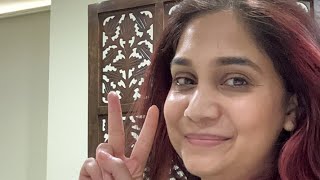
Subscribe to my Vlog Channel - Nidhi Katiyar Vlogs
https://www.youtube.com/channel/UCVgQXr1OwlxEKKhVPCTYlKg
-----------------------------------------------------------------------------------------------------------------------------
My Referal Codes -
Plum Goodness -
Use code - NK15 for 15% off
https://plumgoodness.com/discount/NK15
Re'equil - Use Code - NIDHIKATIYAR FOR 10%OFF
https://bit.ly/3ofrJhl
Mamaearth - Use Code nidhi2021 for 20% off
colorbar cosmetics - CBAFNIDHIKA20
Watch My other Vlogs -
https://www.youtube.com/watch?v=ih_bKToLC3g&list=PLswt2K44s-hbKsvEBLEC5fHDkEp7Wwnpd
Watch My Disney Princess to Indian Wedding Series here - Its fun to watch Indian Avatar of Disney Princesses -
https://www.youtube.com/watch?v=lPkRbupcUB0&list=PLswt2K44s-haUOABjzzUOG2jwUh_Fpr96
Watch My Monotone Makeup Looks Here -
https://www.youtube.com/watch?v=WrpPx-_F1Yw&list=PLswt2K44s-hZOfXt-sSQlVe7C_vBOjsWQ
Love Affordable Makeup - Checkout What's new in Affordable -
https://www.youtube.com/watch?v=lowjaZ9kZcs&list=PLswt2K44s-hZcQ-tZUr7GzH0ymkV18U8o
Here is my Get UNREADY With Me -
https://www.youtube.com/watch?v=aLtDX9l8ovo&list=PLswt2K44s-hbLjRz8rtj8FTC-3tZ55yzY
-----------------------------------------------------------------------------------------------------------------------------------
Follow me on all my social media's below:
email :team.nidhivlogs@gmail.com
Facebook: https://www.facebook.com/prettysimplenk/
Twitter : https://twitter.com/nidhikatiyar167
Instagram - https://www.instagram.com/nidhi.167/
Shop affordable Makeup here -
https://www.cuffsnlashes.com
------------------------------------------------------------------------------------------------------------------------------
Shop affordable Makeup here -
https://www.cuffsnlashes.com
Subscribe to my other channel 'Cuffs
Beauty Tips video | 16311 views

Styling Pakistani suit from @Meesho #shorts #meeshosuithaul #pakistanisuits #meeshokurti
Beauty Tips video | 2489 views

Barbie makeup- cut crease eye look - pink makeup for beginners #shorts #cutcrease #pinkeyelook Flat 25% off on Cuffs n Lashes entire range + free gift on all orders above 299
Cuffs n Lashes X Shystyles eyeshadow Palette - Seductress https://www.purplle.com/product/cuffs-n-lashes-x-shystyles-the-shystyles-palette-12-color-mini-palette-seductress
Cuffs n Lashes Eyelashes - Pink City - https://www.purplle.com/product/cuffs-n-lashes-5d-eyelashes-17-pink-city
Cuffs n Lashes Cover Pot - Nude - https://www.purplle.com/product/cuffs-n-lashes-cover-pots-nude
Cuffs n Lashes F021 Fat top brush - https://www.purplle.com/product/cuff-n-lashes-makeup-brushes-f-021-flat-top-kabuki-brush
Cuffs n Lashes x Shsytyeles Brush - https://www.purplle.com/product/cuffs-n-lashes-x-shystyles-makeup-brush-cs01-flat-shader-brush
Cuffs n Lashes Flat shader Brush E004 - https://www.purplle.com/product/cuff-n-lashes-makeup-brushes-e004-big-lat-brush
Barbie makeup- cut crease eye look - pink makeup for beginners #shorts #cutcrease #pinkeyelook
Beauty Tips video | 2639 views
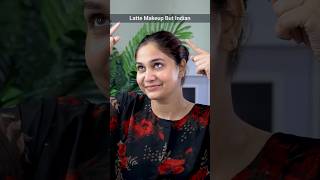
Latte Makeup but with Indian touch #shorts #lattemakeup #viralmakeuphacks #viralmakeuptrends #makeup
Beauty Tips video | 2175 views

No Makeup vs No Makeup Makeup look #shorts #nomakeupmakeup #nofilter #naturalmakeup #everydaymakeup
Beauty Tips video | 2616 views
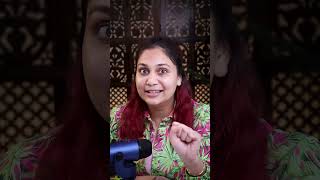
The Purplle I Heart Beauty Sale goes live on the 2nd of August!
BUY 1 GET 1 FREE on all mCaffeine products.
mCaffeine Cherry Affair - Coffee Face Mist - https://mlpl.link/INFIwj2Q
mCaffeine On The Go Coffee Body Stick - https://mlpl.link/INF3lvBa
Download the Purplle app here:
https://mlpl.link/JCCZ2INF
Subscribe to my Vlog Channel - Nidhi Katiyar Vlogs
https://www.youtube.com/channel/UCVgQXr1OwlxEKKhVPCTYlKg
-----------------------------------------------------------------------------------------------------------------------------
Watch My other Vlogs -
https://www.youtube.com/watch?v=ih_bKToLC3g&list=PLswt2K44s-hbKsvEBLEC5fHDkEp7Wwnpd
Watch My Disney Princess to Indian Wedding Series here - Its fun to watch Indian Avatar of Disney Princesses -
https://www.youtube.com/watch?v=lPkRbupcUB0&list=PLswt2K44s-haUOABjzzUOG2jwUh_Fpr96
Watch My Monotone Makeup Looks Here -
https://www.youtube.com/watch?v=WrpPx-_F1Yw&list=PLswt2K44s-hZOfXt-sSQlVe7C_vBOjsWQ
Love Affordable Makeup - Checkout What's new in Affordable -
https://www.youtube.com/watch?v=lowjaZ9kZcs&list=PLswt2K44s-hZcQ-tZUr7GzH0ymkV18U8o
Here is my Get UNREADY With Me -
https://www.youtube.com/watch?v=aLtDX9l8ovo&list=PLswt2K44s-hbLjRz8rtj8FTC-3tZ55yzY
-----------------------------------------------------------------------------------------------------------------------------------
Follow me on all my social media's below:
email :team.nidhivlogs@gmail.com
Facebook: https://www.facebook.com/prettysimplenk/
Twitter : https://twitter.com/nidhikatiyar167
Instagram - https://www.instagram.com/nidhi.167/
Shop affordable Makeup here -
https://www.cuffsnlashes.com
------------------------------------------------------------------------------------------------------------------------------
Shop affordable Makeup here -
https://www.cuffs
Beauty Tips video | 2346 views